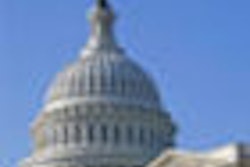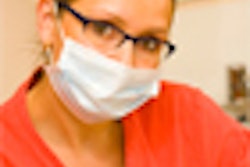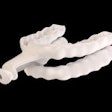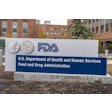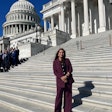
A Minnesota health task force is drafting regulations for a new class of oral health worker whose job description will likely lie somewhere between that of a hygienist and a dentist.
The 13-member work group, which includes both dentists and hygienists, will submit proposed regulations for the new oral health practitioner (OHP) on December 15, with the state Legislature scheduled to take up the regulations a month later.
The process is unfolding as a result of a May law that mandates the creation of an oral health practitioner in Minnesota by January 1, 2011.
“We feel this will provide more people in underserved areas direct access to care.”
— Diann Bomkamp, R.D.H., American Dental Hygienists' Association
The current law began with a controversial bill to create an advanced dental hygiene practitioner (ADHP).
As defined in the bill, the ADHP could perform traditional preventive services such as cleanings, as well as therapeutic, palliative, prescriptive, diagnostic, and minimally invasive restorative services. The latter would include fillings and extractions; crowns; pulpotomies on primary teeth; prescribing, administering, and dispensing medications for infections and pain management; and more.
These services could be provided by an ADHP without the patient first being examined by a dentist, without the presence of a dentist, and at a location where a dentist is not present.
The ADHP model was proposed as a way to provide access to oral care for millions of uninsured, especially those in rural areas, inner cities, and suburbs, according to Mary Beth Kensek, president of the Minnesota Dental Hygienists' Association. It is a new model of service in which hygienists would enter into an agreement with dentists to provide specific services in unsupervised settings, she told DrBicuspid.com.
This bill did not pass the House, but the revised version, which refers instead to an OHP, was attached to an education bill that passed both the House and Senate and was signed into law in May.
The new bill will "authorize oral health practitioners meeting assorted qualifications and conditions to practice after January 1, 2011, if a nationally accredited oral health practitioner program, meeting assorted criteria, is established."
The bill states the OHP must be a licensed, educated provider who works under the supervision of a dentist via a collaborative management agreement only in underserved areas.
The new bill asked that a work group develop recommendations and propose legislation for the education and regulation of these practitioners. Essentially, the work group will define the OHP's scope of practice, level of supervision, education, training, and regulatory requirements.
The group includes representatives from the Minnesota Dental Association (MDA), the University of Minnesota School of Dentistry, the Safety Net Coalition, the Minnesota Board of Dentistry, the Minnesota State Colleges and Universities system, and the Minnesota Dental Hygienists' Association.
The MDA had opposed the original ADHP legislation, saying that "this hasty and drastic measure puts patients' safety at risk." But, the organization is on board with the OHP legislation.
"Today's Senate action was a major breakthrough that will improve oral healthcare for those Minnesotans in the greatest need of access to quality dental care," stated MDA President Jamie Sledd, D.D.S., in a press release after the OHP bill passed. "It is our hope that an OHP can help to efficiently and effectively expand access for underserved populations."
The work group is still in session, and no definite decisions have been made.
The American Dental Hygienists' Association supports the creation of a practitioner similar to the ADHP model.
"We feel this will provide more people in underserved areas direct access to care," said Diann Bomkamp, R.D.H., the association's president. "It's also an opportunity to get more rural people into the dental office."
The ADA said in an official statement that it would be premature to discuss the effect of this legislation on the dental profession and patients until the study group makes its recommendations.
"While far from ideal, this study provision will allow the ADA to assist MDA in collecting data to make our best case for the correct scope, education, and training of this position," said then ADA President Dr. Mark Feldman in an ADA news article.





